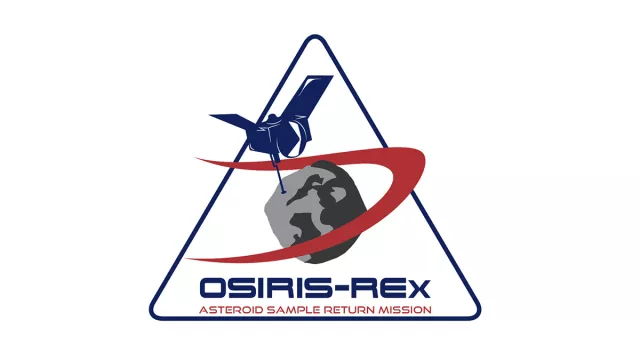Once in orbit around Bennu, OSIRIS-REx studied the near-Earth asteroid for a year, mapped it in 3-D and collected samples to be returned to Earth for laboratory analysis.
Key information
| Mission | Bring soil samples back from an asteroid |
|---|---|
| Domain | Science |
| Launch date | 8 December 2016 |
| Partners | NASA, CNRS, ASC, OCA/LAGRANGE, OCA/GeoAzur, OBSPM/LESIA, University of Lorraine/CRPG, Paris-Saclay University/IAS |
| Where | Asteroid Bennu and then return to Earth |
| Lifetime | 7 years |
| Status | In operation |
Key figures
- 2,110 kg: spacecraft mass
- 5 instruments
- 121.6 g: mass of samples collected
- 4 contributing French laboratories
Key milestones
- 21 April 2029: OSIRIS-APEX goes into orbit around asteroid Apophis 8 days after swinging by Earth
- 11 January 2024: Sample canister opened
- 24 September 2023: Mission renamed OSIRIS-APEX (APophis EXplorer)
- 24 September 2023: Sample return capsule recovered
- 24 September 2023: Sample return capsule released from spacecraft
- 25 April 2022: NASA extends mission to 2029
- 11 May 2021: Spacecraft starts return trip to Earth
- 20 October 2020: OSIRIS-REx performs “touch-and-go” manoeuvre to collect sample from the surface of Bennu
- 12 December 2019: NASA selects sample collection site on surface of Bennu
- 31 December 2018: OSIRIS-REx goes into orbit around asteroid Bennu
- 22 September 2017: Earth gravity assist
- 8 September 2016: Launch of OSIRIS-REx by Atlas V 411
- May 2011: NASA selects OSIRIS-REx project
Project in brief
OSIRIS-REx (Origins-Spectral Interpretation-Resource Identification-Security-Regolith Explorer) is the third mission in NASA’s New Frontiers Program of medium-class interplanetary missions. Its main objective was to bring back soil samples from an asteroid called Bennu.
This asteroid discovered in 1999 has a diameter of about 525 metres and completes an orbit around the Sun every 1.2 years. Its trajectory intersects the orbit of the Earth; according to available data, it may hit it in 2182. Therefore, the mission also aimed to better estimate impact hazards.
OSIRIS-REx was launched in September 2016 and arrived at the asteroid in December 2018.
The instruments—cameras, spectrometers and altimeter—began studying Bennu from late 2018 to October 2020, which included mapping, detecting potential plumes and the presence of natural satellites. They also measured the Yarkovsky effect, which alters the trajectory of the smallest asteroids, typically those spanning less than 20 km. The object’s rotation around its centre causes solar energy to be emitted as infrared radiation in a direction that slowly changes its trajectory. This effect is the main source of uncertainty in predicting the trajectories of near-Earth asteroids, and therefore their Earth impact probability. Precise measurement of the Yarkovsky effect on Bennu further refined the calculation of its orbit and helped better assess the risk of it hitting our planet.
The instruments also exploited the images of the surface and mapped the asteroid to determine potential regolith sampling sites.
On 20 October 2020, the probe performed a “touch-and-go” manoeuvre of a few seconds to collect a sample (60 g to 2 kg) using its robotic arm. The sample was stored in a capsule similar to that used by the STARDUST spacecraft. OSIRIS-REx then continued to tail the asteroid for two more years before beginning its return trip on 10 May 2021, arriving on 24 September 2023.
The capsule containing samples from Bennu was released from the spacecraft on 24 September 2023, four hours before re-entering Earth’s atmosphere at an altitude of 100,000 km and then flying a ballistic trajectory protected by its heatshield to land in the Utah desert at 16:52 CET. Mission teams tracked the capsule’s descent to find it and check that none of its contents had spilled out and contaminated Earth’s environment.
Once recovered, the capsule was flown by helicopter to a local curation facility where it was immediately subjected to a nitrogen purge to avoid contamination. It was then sent to the Johnson Space Center, where it was placed in a special clean room for initial non-destructive analysis: before opening the capsule, the gas surrounding the samples was pumped out and analysed. Some 70 grams that had spilled from the canister were initially swept up, before teams finally succeeded in opening it in January 2024 to find an additional 50 grams or so.
The 200-strong international science team behind the mission is conducting the first analysis campaigns on about one-quarter of the samples’ total mass.
CNES’s role
CNES did not provide instruments for this mission but is supporting the work of several co-investigators involved in the project:
- Patrick Michel, from the LAGRANGE laboratory, is involved in the Carbonaceous Meteorite Working Group (CMWG), the Dynamical Evolution Working Group (DEWG), and the Regolith Development Working Group (RDWG).
- Marco Delbo, also from the LAGRANGE laboratory, is involved in the Dynamical Evolution Working Group (DEWG) and the Thermal Analysis Working Group (TAWG) (to assess the Yarkovsky effect).
- Antonella Barucci, from the LESIA space and astrophysics instrumentation research laboratory, is involved in working groups for mineralogy and physical characterization: Spectral Analysis Working Group (SAWG), Thermal Analysis Working Group (TAWG), Imaging Processing Working Group (IPWG), Astronomy and Photometry Working Group (APWG). Several other LESIA members are also collaborating on the OSIRIS-REx mission: Sonia Fornasier, Frederic Merlin, Marcello Fulchignoni, Alice Praet, Prasanna Deshapriya and Pedro Hasselmann.
- Guy Libourel, from the GeoAzur laboratory, is involved in the Regolith Development Working Group (RDWG) and the Carbonaceous Meteorite Working Group (CMWG). He analysed temperature variations of Bennu to assess their impact on the size of regolith grains and thus determine the most suitable sample sites.
Bernard Marty’s team from the CRPG Earth and planetary sciences laboratory used mass spectroscopy, notably to analyse gases in the sample capsule.
Contacts
Solar System Planets and Small Bodies subject matter expert
Francis Rocard
E-mail: francis.rocard at cnes.fr


